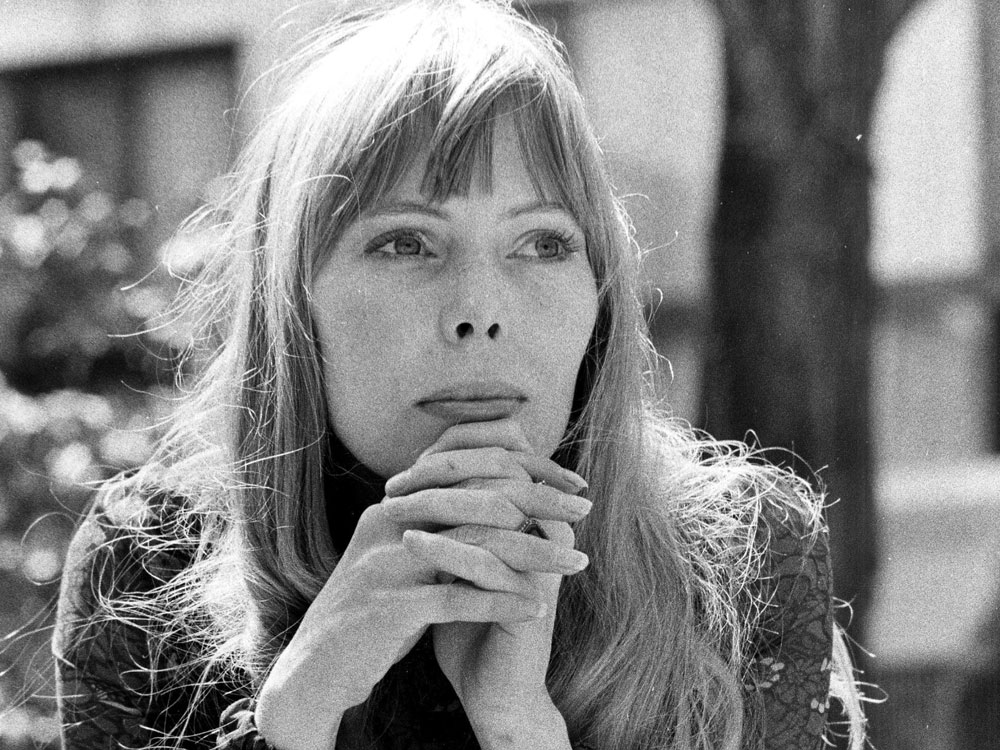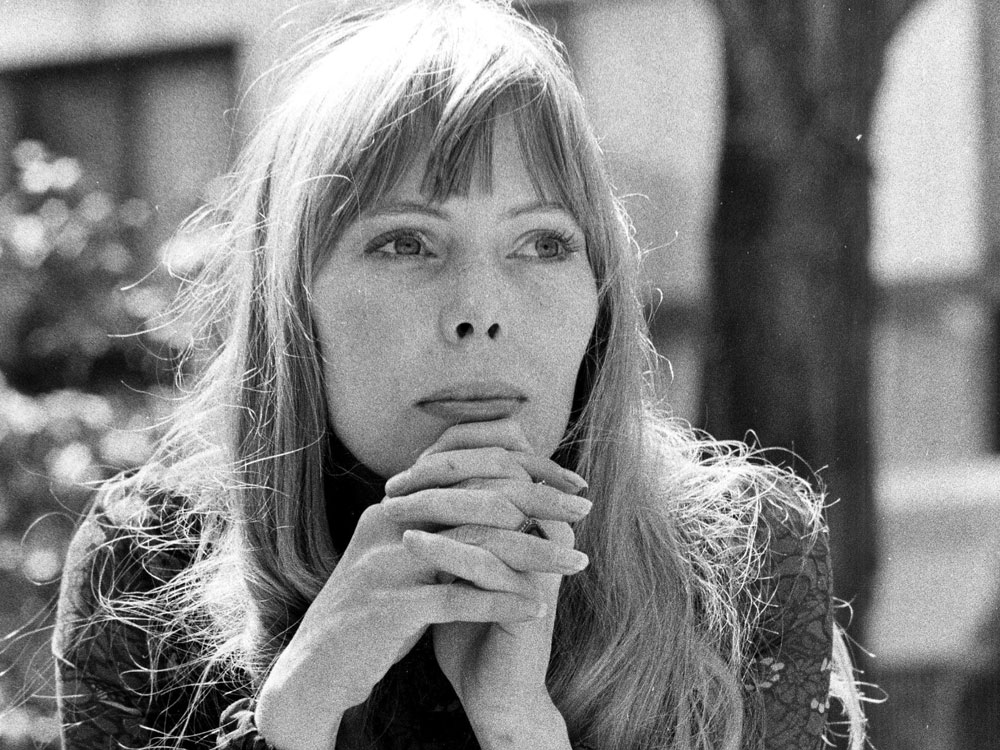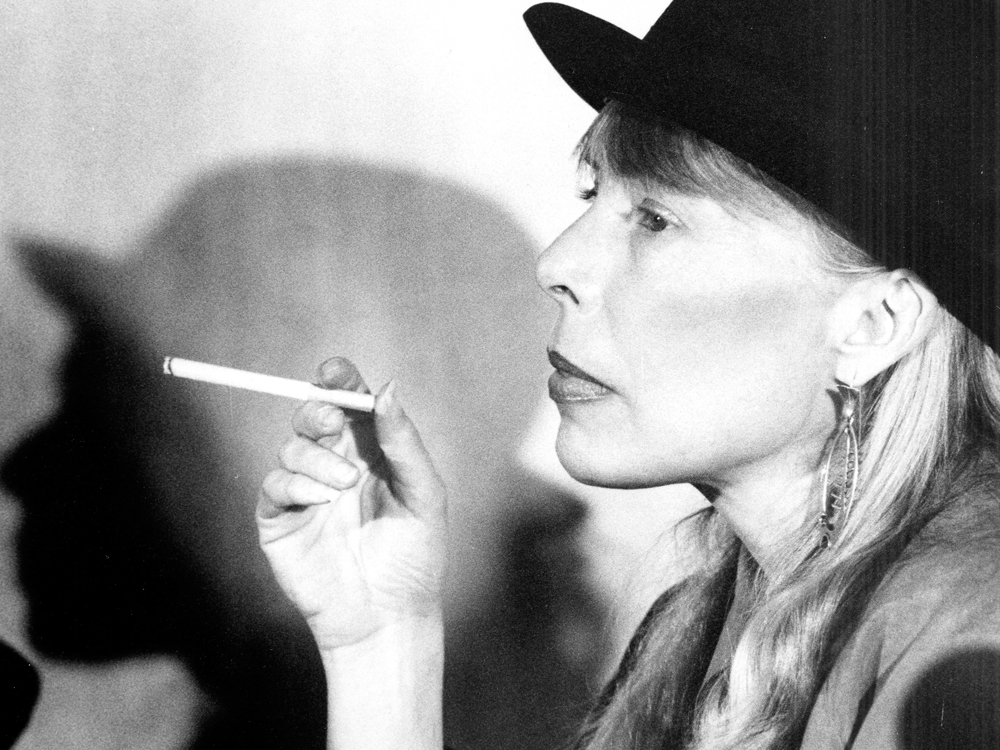Joni Mitchell: Lady Of The Canyon
With news of Joni Mitchell's brain aneurysm dominating the headlines this year, we look back at the singer-songwriter's inspirational life and work...

With news of Joni Mitchell's brain aneurysm dominating the headlines this year, we look back at the singer-songwriter's inspirational life and work...
Words by Kat Lister
In 1970, Joni Mitchell sent a telegram to California, from Europe, with a message to her lover, Graham Nash: ‘If you hold sand too tightly in your hand, it will run through your fingers.’ Nash would hear her farewell letter, in melodic form, a year later when her electrifying, career-defining album ‘Blue’ was released in 1971. ‘There is your song from me,’ she sings, all at sea. Amidst the crashing waves, one thing has remained constant throughout Joni Mitchell’s life and career: an unappeased desire to always break free.
Shifting sand is, perhaps, the best analogy when trying to encapsulate the unquantifiable magic of singer-songwriter Joni Mitchell. Much like these tiny grains of rock and mineral, Joni’s music, so delicate to touch, is almost impossible to contain. It finds lifelines you never knew existed and sticks there. The music, like Joni, is always moving.
Fellow musician, friend, ex-lover, producer and mentor David Crosby describes a young Mitchell arriving on the music-scene in the early 1960s in documentary, ‘Joni Mitchell: A Woman of Heart and Mind’, with a similar naturalistic term: ‘What makes human beings get wisdom is paying dues...you arrive here as a boulder and you knock corners off yourself until you get smooth like a river stone. She was already starting to get smooth.’

In the words of Crosby, Joni Mitchell ‘paid her dues’ from a young age and it would take many years – a traumatic pregnancy and a regretful marriage - for her edges to smooth. Born in Alberta, Canada, in 1943, Mitchell’s health deteriorated dramatically at a young age when she contracted polio. She would describe her home overlooking a railway track, and the window she would stare out from with longing, waving at the one train that passed each day and fantasising about her own escape. In her words, when interviewed for ‘Woman of Heart and Mind’ (2003): ‘Here they come, where are they going?’
Joni would soon be headed for New York’s Greenwich Village in 1967, parking her ambition to be a painter for the time being. Fate would play a hand in her musical-journey when she lost her virginity and became pregnant at the same time. She was just 21 years old. In order to ‘protect’ her parents from any scandal, with abortion illegal in Canada, Mitchell gave her baby up for adoption. She would explain later, ‘I lost my daughter at 21. I had to give her up because I was broke, no place to take her, no money to take her. That was very traumatic.’
Marie Claire Newsletter
Celebrity news, beauty, fashion advice, and fascinating features, delivered straight to your inbox!
Years later she would pen ‘Little Green’, featured on album ‘Blue’ in memory of the baby girl she lost to social taboo. ‘Child with a child pretending,’ she sings with painful self-awareness. Unflinchingly honest, ‘Little Green’ is a prime example of just why ‘Blue’ is still considered a groundbreaking piece of work. In the words of the album’s title-track, each song is like the ‘ink on a pin/underneath the skin’. Joni’s pain, her depression, would in her own words, ‘be the sand that makes the pearl. Most of my best work came out of it.’

Heading back to Greenwich Village in 1967, Joni Mitchell was now separated from her first husband, American folk-singer Chuck Mitchell, who she met only weeks after the birth of her daughter and married in 1965. The hasty marriage was not a happy one and Mitchell began to write to create her own interior world. ‘I Had a King’ can be found on 1968’s ‘Song To A Seagull’ and it slices through their brief union with undeniable poetry: ‘I can’t go back there anymore/You know my keys won’t fit the door/You know my thoughts don’t fit the man/They never can.’ Though the marriage would quickly dissolve, his surname still remains.
Inspired by the personalisation of Bob Dylan’s work, Joni Mitchell’s songs were soon in demand. Well-known artists, including Buffy Sainte-Marie and Judy Collins, flocked to sing her music. One night when Joni was playing in coffee house ‘The Gaslight South’ in Florida, David Crosby walked in and was hypnotised by what he heard. Joni was on the move again: this time to Los Angeles’ hippy-hangout Laurel Canyon…
Joni Mitchell’s debut album was recorded at Sunset Sound Studios and produced by David Crosby himself. Mitchell found love and tentative domesticity with Crosby’s CSN&Y band-mate, Graham Nash, who would mythologise their Canyon abode and committed bliss in song ‘Our House’ (1970). The Canyon quickly became the epicentre of ‘60s counterculture and, in 1969, Woodstock Festival its monolith. Struck by the kind of divine inspiration only Joni could conjure from the heavens above, Woodstock’s anthem, 'Woodstock' (featured on 1970's album 'Ladies of the Canyon') was written without her even being there.

Albums ‘Clouds’ and ‘Ladies of the Canyon’ followed before 1971’s ‘Blue’ propelled Mitchell into the limelight. It was an elevated space she was finding increasingly uncomfortable occupying. You only have to watch footage from 1970’s Isle of Wight festival to see the strain, as Joni stops short her piano playing on ‘For Free’ to politely urge the audience to quieten down so she can focus and feel less anxious.
It is these two juxtapositions - strength and vulnerability - running parallel at the same time that defines Joni Mitchell’s music. Singer-songwriter Kathryn Williams cites Mitchell as a key influence on her own music. When asked why, she explains: ‘It’s her lyrics and how she places them in the melody, how she rhymes and darts about. I learn every time that I have a lot to learn, and I am also taken away by the beauty.’
As is the case for so many, Williams reveals, ‘it was ‘Blue’ when my heart stopped beating. Every song on that record is a crafted piece of heartache.’

When the seventies rolled in, Joni Mitchell shook off past heartbreak and embarked on a new journey, dipping her toes into jazz. ‘Court and Spark’ was released in 1974 and marked an experimental phase for a singer-songwriter unwilling to be defined as merely a fair haired, doe-eyed, folk singer from the Canyon.
The years that followed saw Mitchell push her own boundaries, exploring jazz-fusion with albums ‘The Hissing of Summer Lawns’, ‘Hejira’ (written on the lonely road) and ‘Mingus’ in 1979 (a collaboration with jazz icon Charles Mingus). This was a singer-songwriter who was uninterested in mainstream success – her disinterest continues to this day.

In 2007 Joni Mitchell released her (currently) final studio album and in the following years, she has stepped further and further away from mainstream eyes. On March 31, 2015, Mitchell was found unconscious in her Los Angeles home, the cause of which was confirmed in May as a brain aneurysm.
Much like our personal connection to the music she’s created over the years, when the headline broke, Joni’s trauma somehow felt like ours too. There was an immediate outpouring from strangers who have never even met Mitchell, but feel intimately connected to her nonetheless. Her music has so profoundly expressed the things many of us feel but find so difficult to say.
This stranger, along with thousands of others, wishes her a speedy recovery in 2016. Get well soon, Joni.
The leading destination for fashion, beauty, shopping and finger-on-the-pulse views on the latest issues. Marie Claire's travel content helps you delight in discovering new destinations around the globe, offering a unique – and sometimes unchartered – travel experience. From new hotel openings to the destinations tipped to take over our travel calendars, this iconic name has it covered.
-
 Style Briefing: Matthieu Blazy's last hurrah at Bottega Veneta
Style Briefing: Matthieu Blazy's last hurrah at Bottega VenetaHow the designer delivered a fresh perspective while also honouring its history of craft and creativity
By Rebecca Jane Hill
-
 The Emily in Paris cast has spoken out as one of its stars officially quits the show
The Emily in Paris cast has spoken out as one of its stars officially quits the showBy Jenny Proudfoot
-
 Timothée Chalamet’s mother has opened up about his relationship with Kylie Jenner
Timothée Chalamet’s mother has opened up about his relationship with Kylie JennerBy Jenny Proudfoot